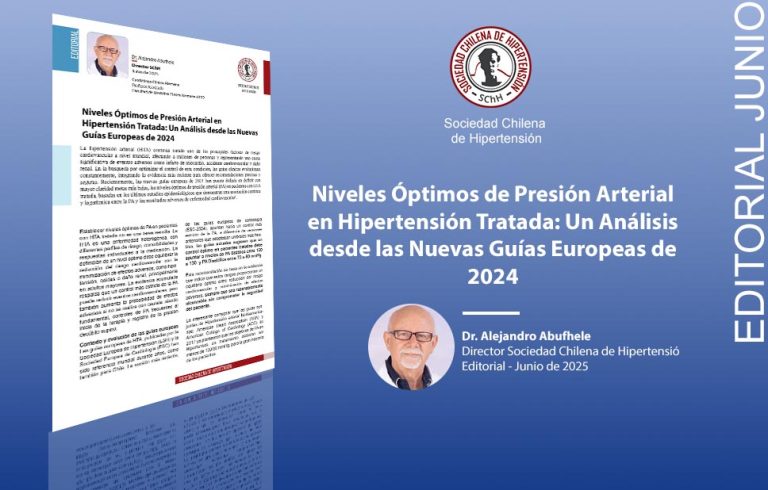
arterial hypertension (HTA) It continues to be one of the main worldwide cardiovascular risk factors, affecting millions of people and representing a significant cause of adverse events such as myocardial infarction, stroke and renal damage. In the search to optimize the control of this condition, Clinical guides constantly evolve, integrating the most recent evidence to offer precise and safe recommendations. Recently, The new European guides of 2024 They have emphasized more clearly lower goals, optimal blood pressure levels (PA) In patients with treated HTA, Based on the latest epidemiological studies that demonstrate a continuous and logarithmic association between the PA and the adverse results of cardiovascular disease1.
Establishing optimal PA levels in patients with treated HT is not a simple task. HTA is a heterogeneous disease, With different risk profiles, COMMORMS AND INDIVIDUAL APPERSIONS TO MEDICATION. The definition of an optimal level must balance the reduction of cardiovascular risk with the minimization of adverse effects, as hypotension, falls or renal damage, mainly in older adults. The accumulated evidence supports that a stricter control of the PA can reduce cardiovascular events, but it also increases the probability of adverse effects if it is not performed cautiously, being fundamental, Frequent PA controls at the beginning of therapy and registration of the supine position.
Context and evolution of European guides
HTA European Guides, Published by the European Hypertension Society (ESH) and the European Cardiology Society (ESC) have been world reference for years, as well as for Chile. The most recent version, of the European Cardiology guides (ESC-2024), They point towards a stricter control of the PA, unlike previous versions that adopted more flexible thresholds, Current guides suggest that optimal control in treated patients should point to systolic PA levels between 120 a 130 and diastolic between 70 a 80 mmHg.
This recommendation is based on the evidence indicating that these ranges provide an optimal balance between cardiovascular risk reduction and minimization of adverse effects, provided it is reasonably attainable without compromising patient safety.
It is interesting to record that the Joint North American arterial hypertension guides: American Heart Association (AHA) y American College of Cardiology (ACC) of 2017 They already stated that the objectives of PA in hypertensive in treatment should be less than 130/80 mmHg, For the vast majority of patients.
In addition, The guides emphasize that these objectives must be adjusted individually, Considering age, The presence of organic damage, comorbidities and treatment tolerance. In fragile older patients, goals and drugs should be individualized.
Besides, The guides underline the importance of the outpatient monitoring of blood pressure (MAP) and home measurement, since these methods allow a more precise evaluation of real control and help avoid white or masked coat.
Evidence and controversies
The evidence that supports these objectives comes from several clinical trials and meta-analysis. Studies like sprint2 and others3 They demonstrated that a stricter control (objective of sistolic <120 mmHg) can reduce cardiovascular events and mortality, including older adults from 75 years.
On the other hand, There is controversy regarding how much PA in older patients or with complex comorbilities. The tendency towards more strict objectives has generated debates in the medical community, highlighting the need for an individualized approach and continuous evaluation of the balance between benefits and risks.
In conclusion, European guides of 2024 They represent an advance in the definition of optimal levels of PA in HTA treated. The recommendation to maintain systolic PA levels between 120-130 mmhg and diastolic country between 70-80 MMHG as ideal goals reflects the evidence that aims to significantly reduce cardiovascular morbidity and mortality, provided that these objectives are attainable and safe for each patient. The concept "as low as reasonably possible", summarizes the above very well. The effective implementation of these recommendations requires a multidisciplinary approach, with emphasis on monitoring, education and customization of treatment. Patient education and long -term adhesion are key aspects to achieve these objectives. Only then can we advance in the effective and safe control of the HTA, decreasing its impact on global health.
References:
1 GUIDES ESC 2024: European Heart Journal.
2 Sprint n Engl j with 2015 ; 373 : 2103 – 2116.
3 W Zhang et al. N engl j with 2021;385:1268-1279.


